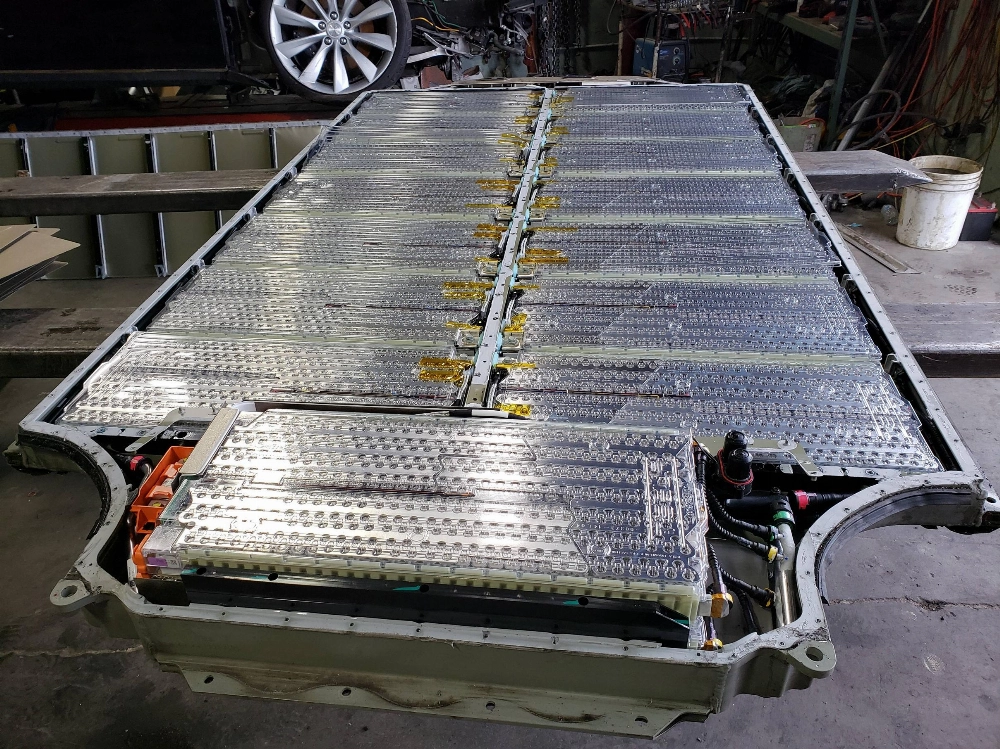Part 1: Battery Cells – Functionality, Design, and Applications
What is a Battery Cell?
A battery cell is the fundamental building block of any battery, responsible for storing and releasing electrical energy. It consists of three key components: the positive electrode (anode), the negative electrode (cathode), and the electrolyte. These elements work together to enable ions to flow between the electrodes during charging and discharging cycles. This ion movement generates an electric current used to power various devices and technologies. Battery cells are essential for providing portable power solutions across industries and technological applications.
Battery Design
Size
Battery cells come in various sizes, ranging from small cells used in devices like watches to larger cells used in electric vehicles. The size of the battery directly impacts its capacity and energy density, which in turn determines its suitability for a specific device or system.
Shape
Cells are available in different shapes, such as cylindrical, prismatic, and pouch cell designs. Cylindrical cells are commonly used in flashlights and laptops, offering a compact structure and efficient packaging. Prismatic cells, which are rectangular, are particularly useful for applications where space optimization is critical, such as smartphones and tablets. Pouch cells offer flexibility, making them ideal for applications that require customized configurations or unconventional shapes.
Electrochemical System
The electrochemical system of a battery cell plays a significant role in its performance, influencing its voltage, capacity, and cycle life. Different chemistries, such as lithium-ion, nickel-metal hydride, and lead-acid, offer varying trade-offs in terms of energy density, cost, and safety. For example, lithium-ion batteries are known for their high energy density and lightweight nature, making them a common choice for portable electronics and electric vehicles. For more details on the advantages of lithium iron phosphate batteries, you can browse 9 Advantages of Lithium Iron Phosphate Battery.
Electrode Materials
Electrode materials significantly impact the overall performance and longevity of a battery cell. Common electrode materials include lithium cobalt oxide (LiCoO2), lithium iron phosphate (LiFePO4), and nickel manganese cobalt oxide (NMC). Each material offers unique advantages in terms of energy density, stability, and safety, allowing manufacturers to tailor batteries for specific applications.
Packaging and Enclosure
Battery cells are typically enclosed in protective packaging to prevent damage and shield them from environmental factors. The packaging must provide adequate insulation and sealing to prevent electrolyte leakage, ensuring lasting reliability. Additionally, proper enclosure is crucial for minimizing safety hazards, such as thermal runaway or short circuits.
Battery Applications
- Consumer Electronics: Battery cells are the core power source for devices such as smartphones, tablets, and laptops, enabling mobility and convenience.
- Electric Vehicles (EVs): In electric vehicles, battery cells provide the energy needed for propulsion, driving the transition towards environmentally friendly transportation solutions.
- Energy Storage Systems: Battery cells are integral to energy storage systems, where they store excess energy generated from renewable sources like solar and wind power. The stored energy can then be used, helping to stabilize and strengthen the electrical grid.
- Power Banks: Battery cells are also used in power banks, providing a reliable backup power source for smartphones, tablets, and other portable devices when a power outlet is unavailable.
- Medical Devices: Many medical devices, including portable monitors and infusion pumps, are powered by battery cells, ensuring reliable performance and user safety.
Part II: Battery Control Module – Functionality, Design, and Applications
What is a Battery Control Module (BCM)?
A Battery Control Module (BCM) plays a crucial role in modern battery management systems. It is responsible for actively monitoring, controlling, and protecting the battery cells within a battery pack. The BCM ensures optimal energy distribution, extends battery life, and enhances safety by preventing overcharging, overheating, and excessive discharging.
Key Functions of a Battery Control Module:
- Monitoring parameters such as cell voltage, temperature, and current.
- Balancing the state of charge of individual cells to maximize battery lifespan.
- Preventing battery pack failures due to overcharge or over-discharge.
- Communicating with external systems in applications such as electric vehicles (EVs), energy storage, and industrial applications.
In the Electric Vehicle sector, the BCM is vital for optimizing performance and ensuring battery safety. It is often integrated with a Battery Management System (BMS) to monitor multiple modules within a large battery pack.
Battery Control Module vs. Battery Management System (BCM vs. BMS)
| Feature | Battery Control Module (BCM) | Battery Management System (BMS) |
|---|---|---|
| Primary Function | Regulates cells within a single battery module, ensuring safe operation | Manages the entire battery pack, including multiple modules |
| Key Components | Voltage and temperature sensors, microcontroller, balancing circuits | Multiple BCMs, data processing unit, cooling system |
| Applications | Electric vehicles, energy storage, marine propulsion | Large EV battery packs, grid-scale energy storage, industrial applications |
Common Battery Control Module Issues & Troubleshooting
BCM failures can lead to reduced battery performance or even system failure. Some common issues and their solutions include:
- Battery is not charging properly: Check for faulty voltage sensors or software misconfigurations.
- Battery pack overheating: Ensure thermal management systems, such as cooling fans, are functioning correctly.
- Battery is draining unusually fast: Inspect for short circuits or cell imbalance issues.
- EV display shows battery errors: Use Diagnostic Trouble Codes (DTCs) to identify and reset the BCM if necessary.
Part III: Battery Pack – Functionality, Design, and Applications
What is a Battery Pack?
A battery pack is a collection of individual battery cells or modules arranged in a specific configuration to provide a single power source. These cells or modules are interconnected and housed within a protective enclosure to ensure safe and efficient operation. The arrangement of battery cells within a lithium-ion battery pack is carefully designed to optimize performance, capacity, and voltage output for specific applications. Battery packs are widely used in various devices and systems, such as electric vehicles, portable electronics, and energy storage solutions, to provide reliable and consistent power.
Battery Design
Cell Arrangement:
- Determine the required voltage and capacity for the intended application.
- Select appropriate cell type and size (e.g., Lithium-Ion, Lithium Polymer) based on performance requirements.
- Arrange cells in series and parallel configurations to achieve the desired voltage and capacity.
- Maintain uniformity in cell specifications to ensure balance and consistency within the pack.
Enclosure Design:
- Select battery pack enclosure materials that provide strength, durability, and efficient thermal management.
- Design the enclosure to accommodate the cell/module arrangement, maximizing space utilization.
- Incorporate features such as cooling vents, heat sinks, and insulation to manage temperature and prevent overheating.
- Implement protective measures to shield cells from physical damage and environmental factors such as moisture and dust.
Safety Features:
- Integrate a Battery Management System (BMS) to monitor and safeguard the battery pack’s operation.
Battery Pack Design and Construction
Introduction
Battery pack design and construction are critical to ensuring safe, reliable, and efficient performance. This process involves careful material selection, careful component integration, and adherence to stringent safety standards. Here, we will introduce key considerations in battery pack design, including cell selection, thermal management, electrical connections, and safety protocols.
Key Considerations in Battery Pack Design
Cell Selection
Selecting the appropriate cells is one of the most critical steps in battery pack design. Cells must meet the specific energy, capacity, and performance requirements of the intended application. They are available in various chemistries, such as lithium-ion (Li-ion) and lithium iron phosphate (LiFePO4), each with its unique characteristics and applications.
Thermal Management
Proper thermal management is essential to maintaining the performance and longevity of a battery pack. Efficient cooling systems, including passive and active cooling solutions, are necessary to manage heat generation. A well-designed thermal management system minimizes the risk of overheating, ensuring the battery operates within safe temperature ranges.
Battery Management System (BMS)
A robust Battery Management System (BMS) is crucial for managing charging and discharging, balancing cell voltages, and regulating temperature. It helps prevent overcharging, over-discharging, and thermal runaway, while also protecting the battery pack from short circuits and other electrical faults.
Safety Features
Safety is a top priority when designing battery packs. Battery packs must be equipped with protection mechanisms, such as fuses, circuit breakers, or disconnect switches. These devices isolate the battery pack in emergency situations, ensuring that potential hazards are minimized. Additionally, compliance with industry safety standards and regulations, such as UN/DOT transportation rules and UL certification, must be ensured.
Electrical Connections
Electrical connections within a battery pack should be designed to minimize energy loss and maximize efficiency. High-quality conductive materials and connectors ensure secure and reliable connections, reducing the risk of voltage drops or electrical failures. Proper insulation and shielding are also essential to prevent arcing, corrosion, and electromagnetic interference.
Testing and Validation
Rigorous testing is required to validate the performance, safety, and reliability of a battery pack. This includes stress tests like temperature cycling, vibration, shock, and electrical load testing to assess the battery pack’s durability and longevity under various operating conditions. Compliance with industry standards and customer requirements must be verified through certification processes.
Applications of Battery Packs
Portable Electronics
Battery packs are commonly used in portable electronic devices, such as smartphones, tablets, and laptops. These portable power solutions provide users with the convenience of using their devices on the go.
Electric Vehicles (EVs)
Battery packs are an integral part of electric vehicles, providing the necessary energy storage for propulsion. As the primary power source for EVs, these battery packs enable zero-emission transportation and reduce reliance on fossil fuels.
Stationary Energy Storage
Battery packs also play a crucial role in stationary energy storage systems. They store excess energy generated from renewable sources, such as solar or wind power, for later use. These systems help stabilize the electrical grid, provide backup power, and offer load shifting capabilities, making them essential in renewable energy applications.
Understanding Battery Cells, Modules, and Packs
Battery Cell
A battery cell, also known as a battery cell, is the basic unit of a battery, consisting of electrodes, an electrolyte, and a casing. It stores and releases electrical energy through chemical reactions and is the smallest component that can be used to build larger battery systems.
Battery Module
A battery module consists of multiple interconnected cells, which are enclosed in a single housing. It often includes cooling systems, voltage monitoring circuits, and structural support. Battery modules provide scalability, allowing multiple cells to be combined to meet specific energy and power requirements.
Battery Pack
A battery pack, also known as a battery pack, includes one or more battery modules or cells. It integrates various components, such as a Battery Management System (BMS), thermal management system, and safety features, to provide a complete power solution. Battery packs offer higher voltage, capacity, and energy density compared to individual cells or modules, and are commonly used in applications such as electric vehicles, energy storage systems, and portable electronics.
Frequently Asked Questions
What is the difference between a battery module and a battery pack?
A battery module consists of interconnected battery cells, often with a management system, and serves as a basic unit for constructing a larger battery pack. A battery pack, on the other hand, includes one or more modules along with additional components such as a housing, connectors, and thermal management systems.
What are cells in a battery pack?
The cells in a battery pack are the individual units that store and release electrical energy. Cells are typically cylindrical or prismatic and are connected in series or parallel to achieve the desired voltage and capacity of the battery pack.
What is a modular battery pack?
A modular battery pack is a design approach that allows a battery pack to be composed of multiple modules, providing flexibility for scaling and customization to meet specific energy and power needs.
Understanding Battery Cells, Modules, and Packs
What is the difference between a cell, a module, and a battery pack?
- Cell: The basic unit of a battery. It is the smallest unit that stores the energy.
- Module: A collection of multiple cells connected together. A module is a larger unit that increases both power and capacity by combining multiple cells.
- Pack: A battery pack comprises one or more modules and other components needed for operation, such as connectors, a protective enclosure, and control electronics.
What is the difference between a battery pack and a module?
The main differences are in their scale and complexity:
- Module: A smaller unit that combines several cells in a specific configuration.
- Pack: A larger assembly, often consisting of multiple modules, designed to provide the required power and including components for functionality, safety, and protection.
What are the symptoms of a faulty battery control module?
A faulty battery control module can result in:
- Rapid battery drain
- Erratic charging behavior
- Battery pack overheating
- Error messages or codes in an electric vehicle or energy storage system
How does a battery control module work?
A battery control module is responsible for supervising and regulating critical parameters of the battery, including voltage, current, and temperature. It ensures efficient energy distribution, balances the charge between individual cells, and prevents overheating or overcharging to maintain safety.
Can a battery control module be replaced?
Yes, a battery control module can be replaced if it fails. However, replacement may require reprogramming or recalibration to ensure it works correctly with the specific battery system it controls. For more details on how battery systems work, see our guide: A Guide to Charging Lithium-Ion Batteries for the First Time.








